Forecasters are predicting a true nor'easter will hit the eastern and central states with rain, thunderstorms, ice, snow and high winds over the Thanksgiving weekend. It's crucial to plan ahead, before bad weather hits. Here are 10 actions you can take to make it easier to weather even the worst of storms. 1. Plan to Keep in Touch
Members of the household might be away from home when the storm hits, so make sure everyone knows how to contact each other. Emergency numbers should be posted at home and on file with daycare and school officials. It can sometimes be easier to call long-distance than locally, so designate an out-of-state friend or relative as the official contact person. Text messages can sometimes get through when phone calls don't, so make sure all household members know how to send and receive text. | 
| 2. Collect Needed Equipment
Inspect any storm windows or shutters to see if they are in good shape. Make sure all snow removal equipment and supplies are accessible and ready to use -- such as a snow shovel, snow blower, rock salt to melt ice on walkways and sand (or non-clumping kitty litter) to add traction. Stockpile extra batteries in various sizes, and have cell phone chargers easily accessible to keep all phones charged up (at least while the power stays on). Consider buying a gas or diesel portable generator or installing a permanent stand-by generator. | 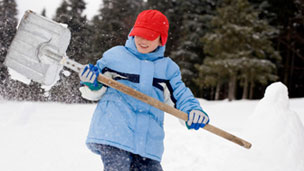
| 3. Play it Safe
The household should have at least one fire extinguisher, smoke detector and carbon monoxide detector, charged and ready to go. If the power goes out, don't plan on using candles, because of the high fire danger. Use flashlights as well as battery-powered lamps or lanterns. Also, never use a camp stove, propane lantern or portable barbecue grill inside without venting it to the outdoors, because the fumes are deadly. | 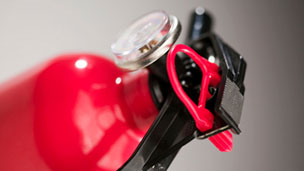
| 4. Hunt and Gather
Make sure the pantry is stocked with several large containers of clean water and a three- to five-day supply of high-energy foods like dried fruit or candy, easy-to-eat items like bread or crackers, or canned food that doesn't require cooking, plus a non-electric can opener. If there's a baby in the house, include baby food, formula, bottles and diapers. | 
| 5. Don't Forget Fido
Planning ahead includes arrangements for family pets. Have at least a week of food, water and any other needed supplies for each animal. Designate who in the household is responsible for caring for each pet during the storm, including keeping them warm and disposing of their waste products. | 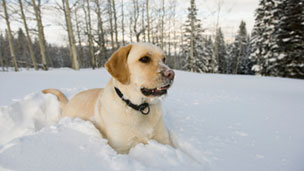
| 6. Think Warm
Caulk and weatherstrip all doors and windows, and consider adding more insulation to the attic or walls. If there's a wood fireplace, have the chimney cleaned and lay in a supply of firewood. If the house is heated by propane or heating oil, make sure the fuel tank is full, in good shape and firmly secured. Know exactly where to find extra blankets or sleeping bags. Decide ahead of times which rooms need to be kept warm, and which can be temporarily closed off to conserve fuel. | 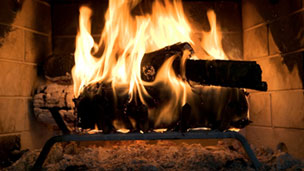
| 7. Be Ready to Play Doctor
Have a first aid kit on hand, plus a seven-day supply of all required prescription medicines. Make sure local emergency responders are aware of household members with special medical needs. And because puncture wounds are a possibility, check that all household members' tetanus shots are up-to-date. | 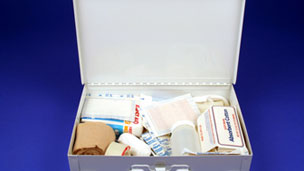
| 8. Create a Drip
To avoid frozen pipes during the storm, open all water taps slightly so they drip continuously, and keep indoor temperatures as warm as possible. Open sink cabinet doors, so more warm gets inside (moving household chemicals out of the reach of young children). If there are water supply lines in the garage, keep the garage doors closed. Never try to thaw frozen pipes with an open flame; remove any insulation and wrap the pipes in rags. Open all faucets and pour hot water over the pipe, starting with areas most exposed to the cold. | 
| 9. Get the 411
Find out in advance how your community warns the public about severe weather, whether it's a siren or on radio or television. Monitor the media reports throughout the storm. In case the power goes out, have a battery-powered radio available for listening to local emergency instructions. | 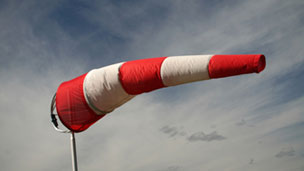
| 10. Understand the Jargon
- Winter Storm Outlook: Possible storm in 2-5 days.
- Winter Weather Advisory: Expect significant inconvenience; conditions may be hazardous
- Frost/Freeze Warning: Below-freezing temps
- Winter Storm Watch: Storm conditions within 36-48 hours; monitor any changes
- Winter Storm Warning: Life-threatening conditions within 24 hours; take immediate precautions.
- Blizzard Warning: Take shelter immediately.
| 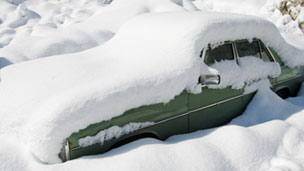 |
It pays to plan ahead, so that when the winds howl and the snow piles in deep drifts, you'll be ready.
|